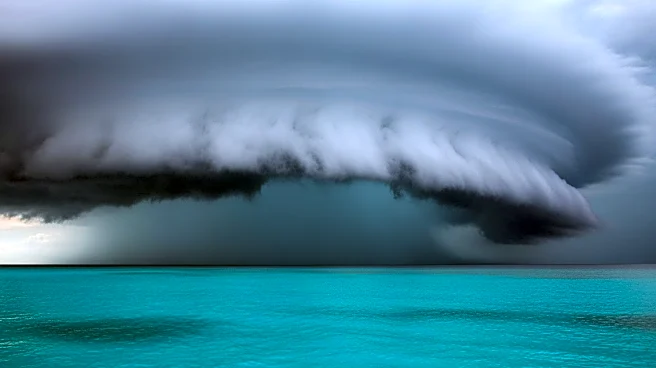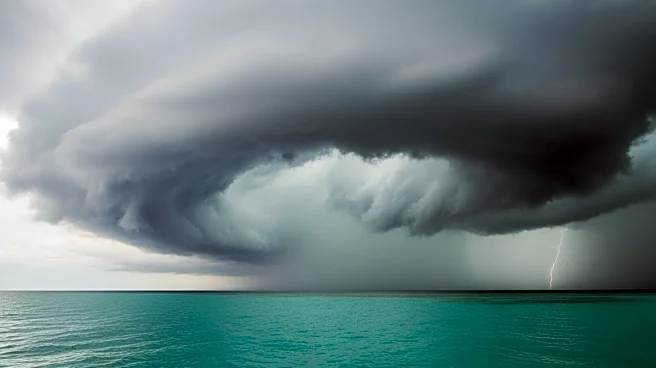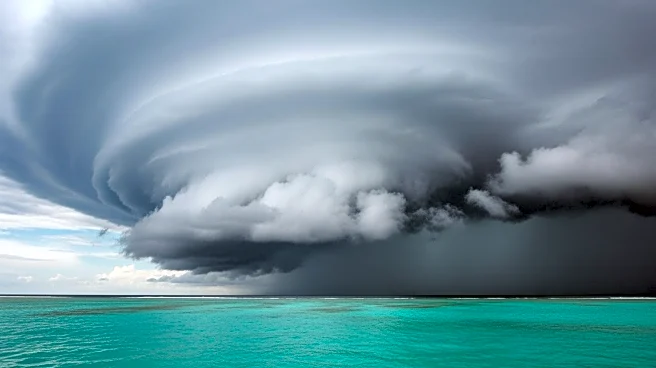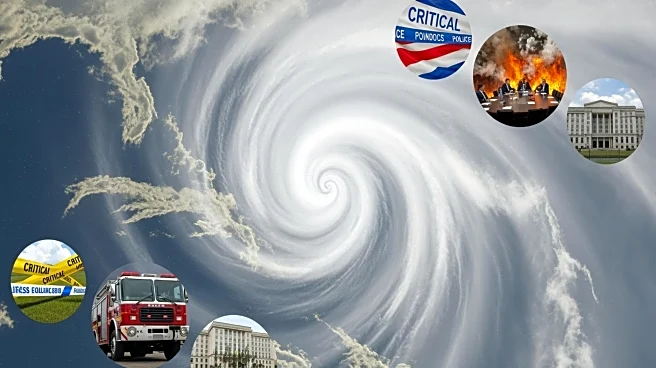What's Happening?
Tropical Storm Melissa is currently moving through the northern Caribbean, with forecasts predicting it will intensify into a major hurricane by the weekend. The storm is expected to bring life-threatening
flash flooding to Haiti and Jamaica, even if it does not make a direct landfall. Hurricane watches are in effect for southwestern Haiti and Jamaica, with the storm predicted to pass near or south of Hispaniola and Jamaica. Meteorologists anticipate that Melissa could become a Category 4 hurricane or stronger by early next week, potentially affecting Cuba and the Bahamas with destructive winds, coastal surge, and inland flooding.
Why It's Important?
The slow movement of Tropical Storm Melissa increases the risk of prolonged impacts, allowing the storm to intensify over warm Caribbean waters. This poses a significant threat to the Caribbean islands, particularly Haiti and Jamaica, which are vulnerable to flash flooding and landslides due to their mountainous terrain. The potential for Melissa to become one of the strongest storms recorded in the Atlantic highlights the increasing severity of tropical cyclones, which can have devastating effects on infrastructure, agriculture, and local economies in affected regions.
What's Next?
As Melissa continues to move northwest, it is expected to slow down and intensify over the weekend. The storm's path may lead it to interact with a separate disturbance near the East Coast, potentially affecting the Eastern Seaboard. The National Hurricane Center will continue to monitor the storm's development and issue updates on its trajectory and intensity. Stakeholders in the Caribbean and potentially the U.S. East Coast should prepare for possible impacts, including evacuation plans and emergency response measures.
Beyond the Headlines
The potential intensification of Tropical Storm Melissa into a Category 5 hurricane underscores the impact of climate change on storm severity. Warmer sea surface temperatures contribute to the rapid intensification of tropical cyclones, increasing the likelihood of extreme weather events. This trend poses challenges for disaster preparedness and response, particularly in regions with limited resources and infrastructure.











